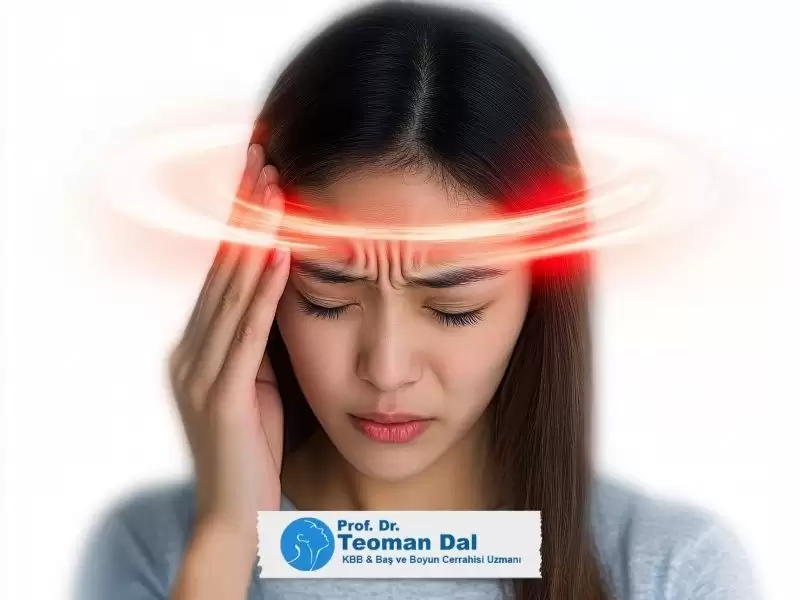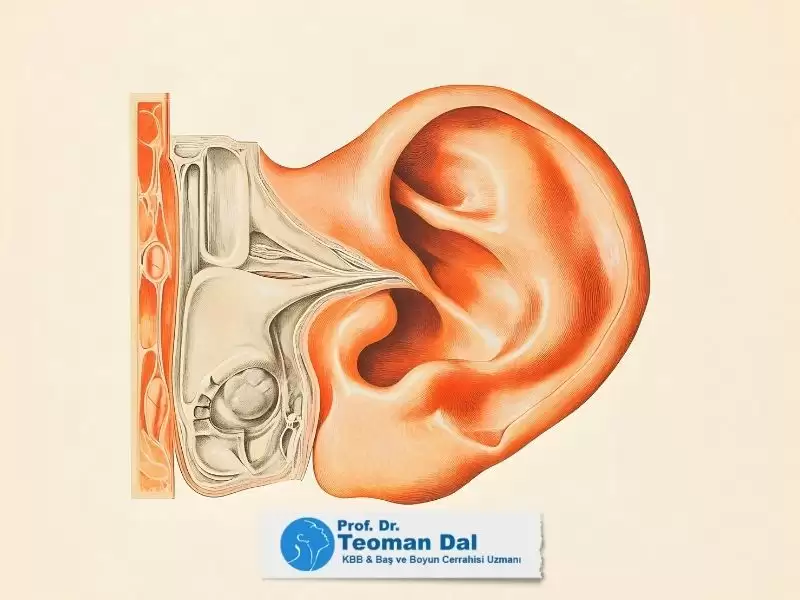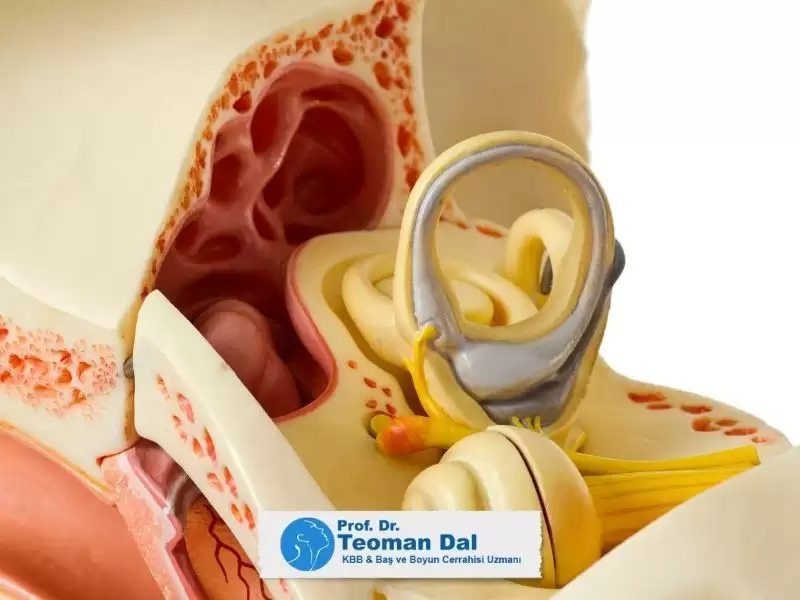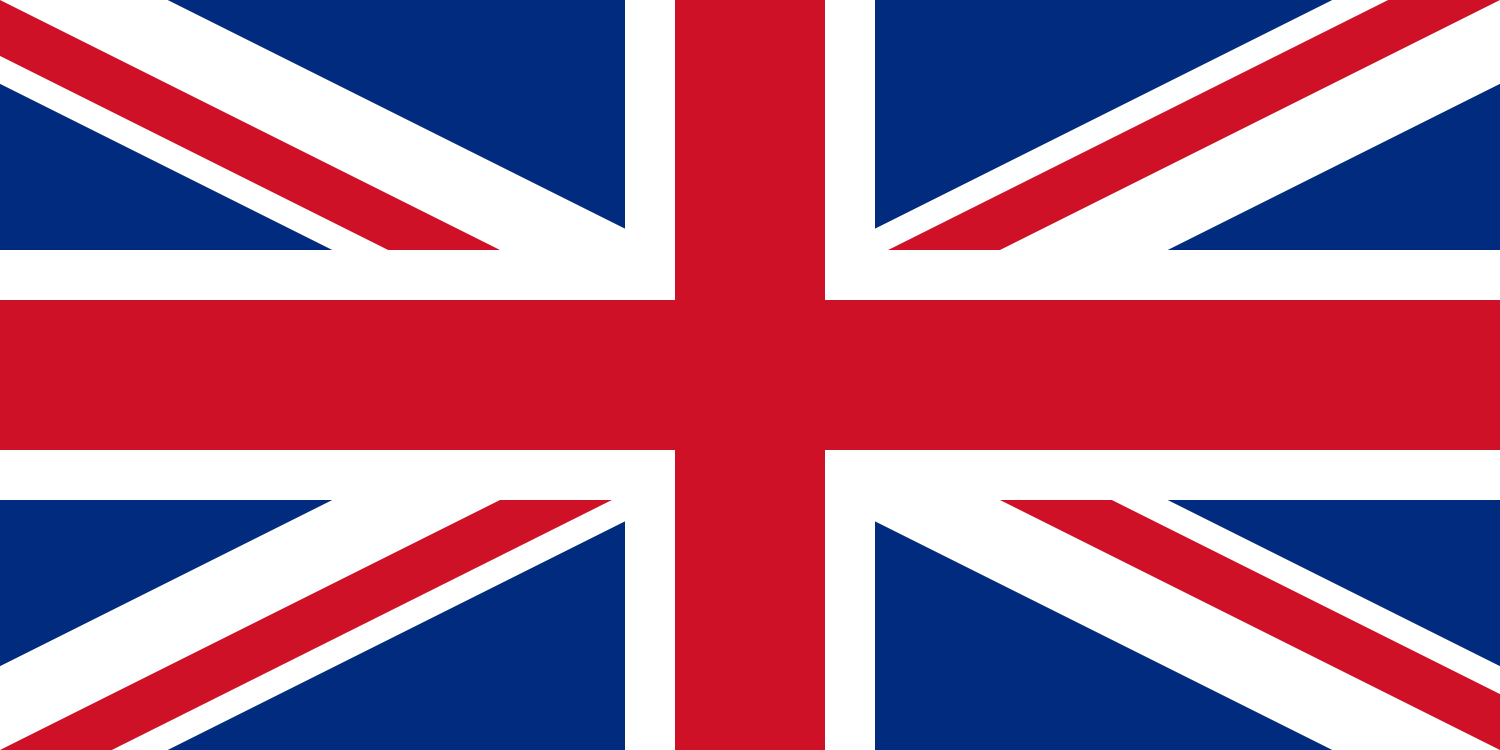Timpanoplasti Ameliyatı Nedir?
Timpanoplasti, kulak zarı delinmeleri ve kronik orta kulak hastalıklarının tedavisinde uygulanan cerrahi bir yöntemdir. Bu ameliyat; kulak zarının onarılması, orta kulaktaki işitme sisteminin yeniden yapılandırılması ve varsa mastoid kemik içerisindeki iltihaplı dokuların temizlenmesi işlemlerini kapsar.
Uygulanan yönteme göre sadece kulak zarındaki deliğin kapatılması (miringoplasti), zarla birlikte ses iletimini sağlayan kemikçik sisteminin onarımı (timpanoplasti), mastoid kemik içindeki iltihabın temizlenmesi (mastoidektomi) ya da tüm işlemlerin birlikte uygulanması (timpanomastoidektomi) söz konusu olabilir.
Timpanoplasti Hangi Durumlarda Yapılır?
Kulak zarında delik olan, ancak ciddi işitme kaybı yaşamayan bireylerde timpanoplasti ameliyatı; suya karşı korunma zorunluluğunu ortadan kaldırarak yaşam kalitesini artırmayı ve zamanla gelişebilecek işitme kayıplarını önlemeyi amaçlar.
Bununla birlikte:
- Tekrarlayan kulak akıntısı olan hastalarda,
- Orta kulaktaki kemikçik sisteminde bozulma varsa,
- Kolesteatoma (kemiği eriten iltihaplı doku) gelişmişse,
timpanoplasti daha kapsamlı bir tedavi gerektirir. Kolesteatoma gibi durumlarda asıl hedef, işitmeden çok, iltihabın yayılmasını ve komplikasyonları (yüz felci, menenjit, beyin apsesi vb.) önlemektir.
Ameliyat Nasıl Yapılır?
Ameliyat tekniği, kulak zarındaki deliğin yeri, kulak kanalının yapısı ve hastalığın yaygınlığı gibi birçok faktöre göre değişir. Cerrahın deneyimi ve tercihi de önemli bir belirleyicidir.
Cerrahi Yaklaşımlar:
- Kulak kanalı içinden
- Kulak arkasından
- Kulak içinden
Zarın ön kısmındaki deliklerde veya mastoid kemiğe müdahale gerektiğinde genellikle kulak arkasından kesi yapılır.
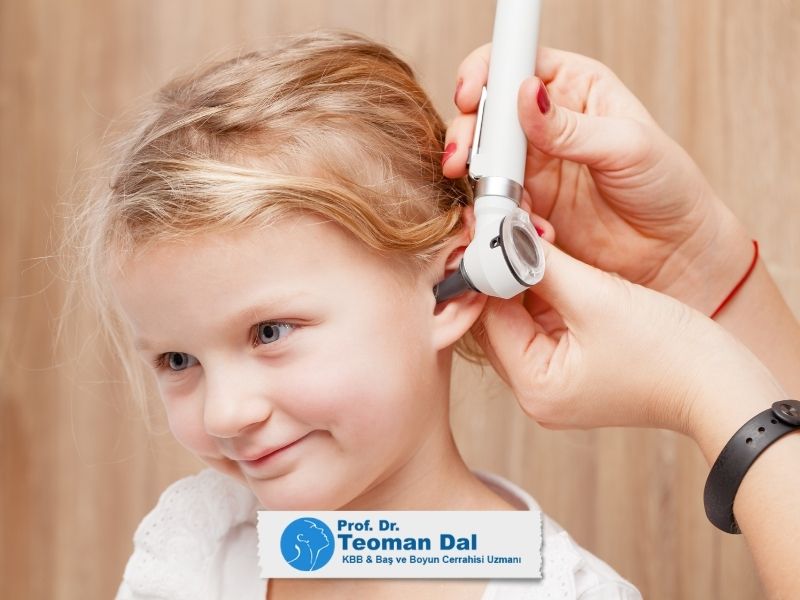
Kullanılan Doku ve Materyaller:
Kulak zarını onarmak için en yaygın kullanılan doku kulak kanalı önünde yer alan kıkırdak çıkıntıdan (tragus) ya da kulak kepçesi (auriküla) elde edilen kıkırdak parçalar ve şakak adalesi kılıfıdır.
İşitmeyi ileten kemikçiklerin onarımında ise doğal kemikçikler, protezler ya da kıkırdak parçaları kullanılır.
Ameliyat Sonrası Süreç
Hastalar genellikle ameliyatın ertesi günü taburcu edilir. İyileşme süreci ve bakım aşağıdaki şekilde planlanır:
Mastoid kemiğe müdahale yapılmayan hastalar:
- 10-14 gün sonra kulak içi süngerler alınır.
- 3-4 hafta içinde tam iyileşme beklenir.
- İlk ay uçak yolculuğu ve gribal enfeksiyonlardan kaçınılmalıdır.
- Başarı oranı genellikle yüksektir.
Mastoid kemiğe müdahale yapılan hastalar:
- İyileşme daha uzun sürer.
- İşitme kazanımı sınırlı olabilir.
- Kolesteatoma tekrarlayabileceği için düzenli kontroller gerekir.
Bazı durumlarda, ikinci bir cerrahi müdahale (ikinci bakış ameliyatı) ile işitme sistemi yeniden yapılandırılabilir.
Sonuç
Timpanoplasti ameliyatları, her hastaya özel planlanması gereken, deneyim gerektiren işlemlerdir. Ameliyatın başarı oranı, mevcut hastalığın yaygınlığına, işitme kaybının derecesine ve cerrahi sırasında karşılaşılan durumlara bağlıdır. Özellikle kolesteatomalı olgularda, zamanında yapılan cerrahi müdahale hayati önem taşır.


